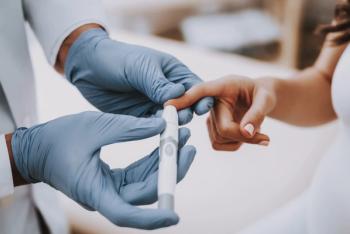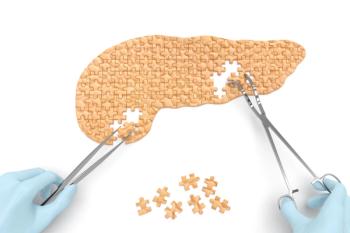
Temporal Characterization of Radiation Therapy-Associated Acute Pain in Oral, Oropharyngeal Cancer
Accurate characterization and differentiation of acute pain during radiation therapy may help facilitate symptom management for patients with oral cavity and oropharyngeal cancers.
For patients with oral cancer (OC) and oropharyngeal cancer (OPC) treated with radiation therapy (RT), there may be an association between dynamic pain, physiologic kinetics, and toxicity kinetics; however, there is still a need for further optimized pain control via data-driven clinical decision support systems, according to research published in Oral Oncology Reports.1
Due to its multifactorial etiology and variability from patient to patient, pain management during RT for patients with OC/OPC is often challenging. Current pain-related studies on head and neck cancers may not include pain descriptors and physiologic kinetics, such as vital signs, in their design, which may lead to lack of knowledge in understanding mechanisms of acute pain.
To address this knowledge gap, a team of investigators conducted a retrospective study “to provide an in-depth analysis on dynamic, acute pain profiles experienced by a modern, prospective OC/OPC cohort treated with curative RT/[chemoradiation(CRT)].”
Of the 351 OC/OPC patients treated with RT/CRT, 120 (34%) had OC, 228 (65%) had OPC, and 3 patients (1%) had an unknown primary cancer. The majority of the cohort was male (74%), White (86%), reported no drug abuse (82%), were p16/human papilloma virus (HPV) positive (59%), and had a clinical T stage T1-T2 (62%). The mean age at diagnosis was 58.5 years and the most common primary tumor sites were tonsils (32%), base of the tongue (31%), and the tongue (20%).
Patient pain trajectory and pain profiles were reported for “weekly see visits” (WSV) at baseline to week 7 (WSV7). Of the cohort, any pain was reported in 341 patients at baseline, in 351 patients at WSV1, in 303 patients at WSV6, and in 159 patients at WSV7. A progressive temporal increase in pain scores was noted from baseline (mean, 1.4) to WSV (mean, 4.7) with median pain scores of 0 to 5, respectively. A significant chance in overall pain intensity was also noted from WSV1 to WSV6 (P <.001). “By WSV6, 66% and 84% of the cohort reported mouth and throat pain, respectively, with a median pain score of 5 (range, 1–10),” the authors noted.
Of note were the similarities between pain frequency and gradual worsening of pain from WSV1 to WSV7. At WSV1, 20% of participants noted intermittent frequency of pain but by WSV7, 45% of participants noted that the pain was constant or continuous. Additionally, by WSV7, 40% of patients said that the pain was gradually worsening.
“In conclusion, our results demonstrate a significant temporal increase in the severity of pain and other radiation treatment-related acute toxicities throughout the course of RT/CRT in OC/OPC patients and an ongoing need for better and safer pain control in this population,” the researchers wrote.
Reference
1. Salama V, Youssef S, Xu T, et al. Temporal characterization of acute pain and toxicity kinetics during radiation therapy for head and neck cancer. A retrospective study. Oral Oncol Rep. Published online August 23, 2023. doi:10.1016/j.oor.2023.100092
Newsletter
Pharmacy practice is always changing. Stay ahead of the curve with the Drug Topics newsletter and get the latest drug information, industry trends, and patient care tips.




